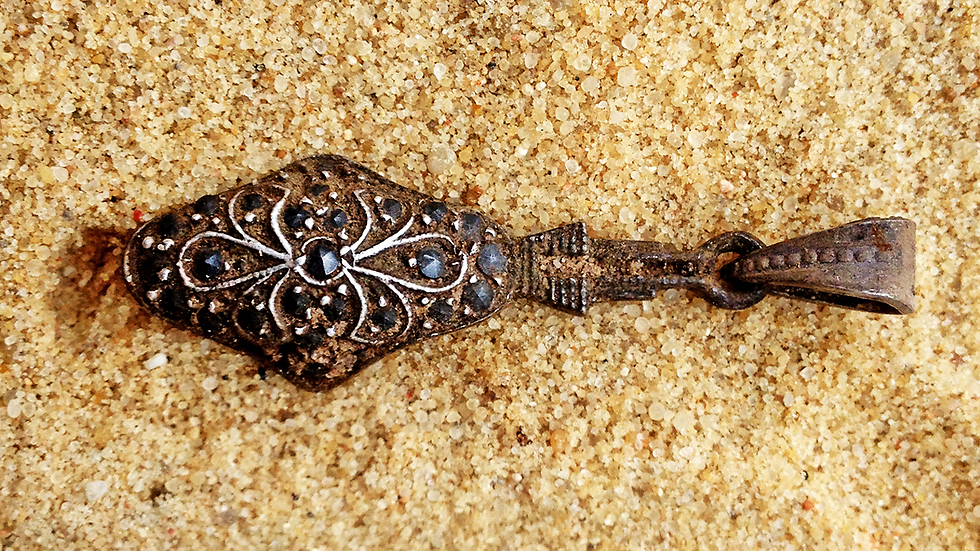Uncovering Sobibor: The Woman Behind the Pendant
Hairpins and women's jewelry uncovered in Sobibor reveal a poignant story from the Holocaust.
 (Photo: Yoram Haimi, Israel Antiquities Authority)
(Photo: Yoram Haimi, Israel Antiquities Authority)Archaeological Discoveries from the Holocaust at Sobibor Extermination Camp: During archaeological excavations in Poland, a hair-shearing barrack was uncovered, where women were taken before being sent to the gas chambers. Beneath the barracks, hairpins and personal women's jewelry, taken from the women on their final journey, were found.
The discovery was made by archaeologist Yoram Haimi from the Israel Antiquities Authority, alongside archaeologists from Poland and the Netherlands. The dig is funded by the steering committee for the establishment of a memorial site in Sobibor and accompanied by Yad Vashem's International Institute for Holocaust Research.
During the excavation, remnants of a structure were revealed along the path leading Jews to the gas chambers, cruelly nicknamed 'The Road to Heaven.' The hairpins and jewelry, uncovered during the excavation, likely fell under the floorboards into the structure's foundation, remaining in the camp's soil until now.
(Credit: Israel Antiquities Authority)
Among the findings, archaeologists discovered a glass-coated metal pendant with a depiction of the sacred figure of Moses holding the Ten Commandments, and on the other side, the 'Shema' prayer, along with a Star of David-shaped pendant and a woman's watch. Another pendant, triangular in shape, captivated researchers especially because it bore identifiable details: on one side, 'Mazel Tov' in Hebrew, the date 3.7.1929, and the city name 'Frankfurt am Main' in German; and on the other side - the letter 'H' and three Stars of David.
Researchers found a nearly identical pendant belonging to Anne Frank, who was captured by the Nazis in Amsterdam but born in Frankfurt. Researchers are now attempting to contact descendants of both families to investigate the pendant's significance and explore any possible family connection.
Investigators speculate that the triangular pendant belonged to a girl named Karolina Cohen, aided by researchers at Yad Vashem. It was discovered she was born in Frankfurt on the date inscribed on the pendant. With the help of Dr. Joel Ziesenwein, head of Yad Vashem's deportation research project, Cohen's name was found on lists of Jews transported from Frankfurt to Minsk on November 11, 1941.
 (Photo: Yoram Haimi, Israel Antiquities Authority)
(Photo: Yoram Haimi, Israel Antiquities Authority)Investigators cannot say if Cohen survived the harsh conditions of the Minsk ghetto, but her pendant arrived in Sobibor in September 1943, when the ghetto was liquidated, and about 2,000 inhabitants were sent to the extermination camp. There, on the way to the gas chamber, the pendant slipped from her grasp or that of another.
Sobibor was a concentration and extermination camp that operated from 1942-1943 in occupied Poland. At least 170,000 people, mostly Jews except for a few hundred Roma, were brutally murdered there.

